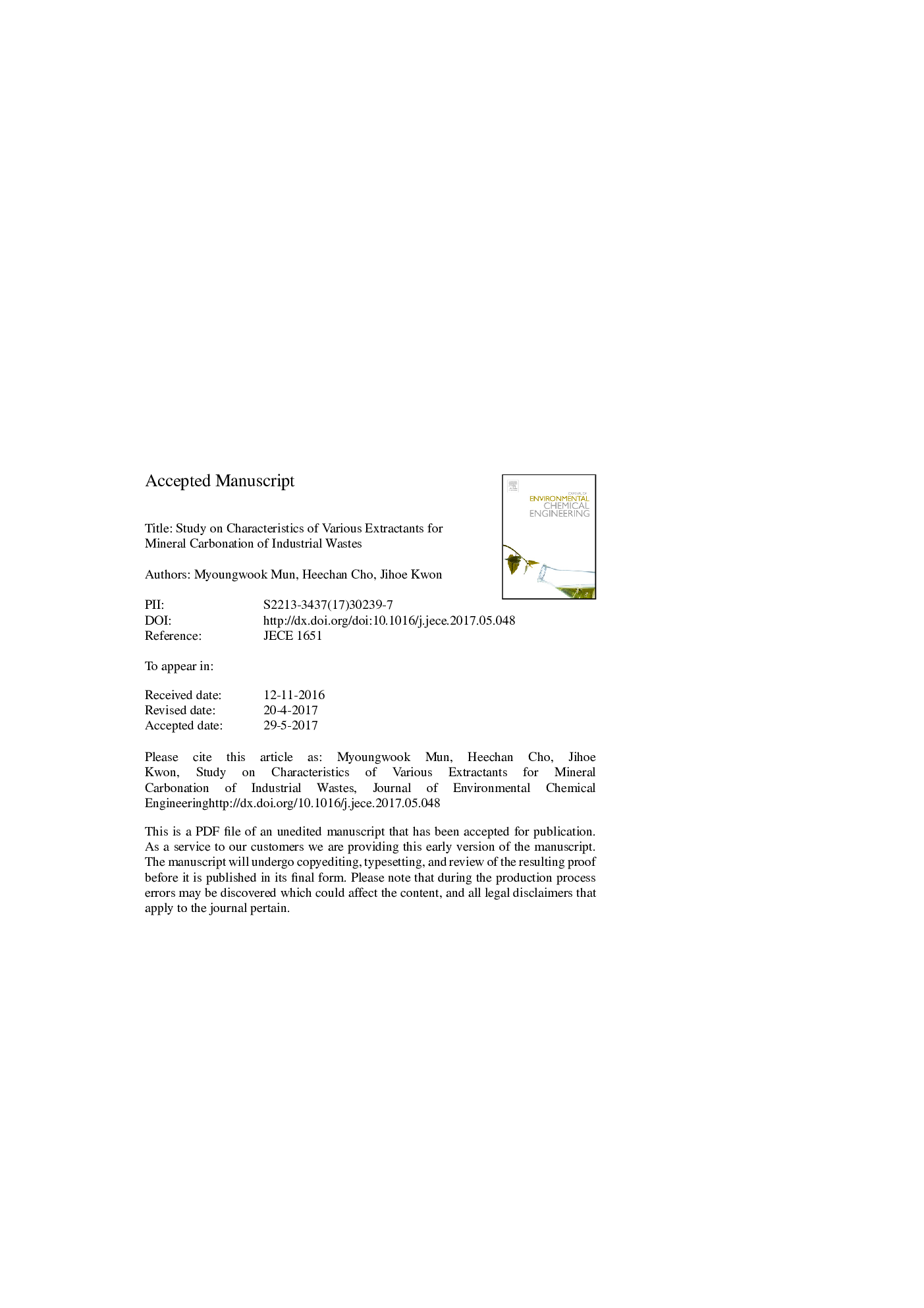| Article ID | Journal | Published Year | Pages | File Type |
|---|---|---|---|---|
| 4908738 | Journal of Environmental Chemical Engineering | 2017 | 42 Pages |
Abstract
In this research, blast furnace slag and waste cement were reacted with various acids at the same concentration (0.1Â M) under atmospheric conditions, in order to determine their efficiency for mineral carbonation. Based on maximum calcium concentration (2400Â mg/L) and selectivity (99%), waste cement was selected as a suitable material for mineral carbonation, and further experiments were conducted with HCl, CH3COOH), and NH4Cl as effective extractants. At low acid concentrations, the concentration of calcium was similar regardless of acid type used. Increasing acid concentration revealed a linear relationship with the maximum ratio of calcium extraction, but the ratio of increment depended on the type of acid. Although the yield of calcium extracted when using NH4Cl was lower than that extracted when using HCl and CH3COOH, vaterite was precipitated in carbonation without a basic reagent. Moreover, the NH4Cl regenerated during carbonation can be reused for calcium extraction. The reaction of waste cement and acids was analyzed using PHREEQC. Even though the initial pH of CH3COOH was higher than that of HCl for dissociation constants, the equilibrium pH and calcium concentration of extraction solution were similar for the two acids. NH4Cl showed a lower extraction rate, except at 0.1Â M. These results were similar to those obtained experimentally. In a periodic fashion, the amount of calcium in the NH4Cl solution fluctuated within specific values, unlike experimental results. There are two possible reasons for these deviations: (1) kinetics, and (2) lack of thermo-dynamic data of different types for the calcium carbonate polymorphs, with the latter requiring further study.
Related Topics
Physical Sciences and Engineering
Chemical Engineering
Chemical Engineering (General)
Authors
Myoungwook Mun, Heechan Cho, Jihoe Kwon,
